How did mechanical-watch king Rolex deal with the arrival of quartz in the 1970s? What follows is an excerpt from the book “Electrifying the Wristwatch,” by WatchTime contributor Lucien Trueb. The book, illustrated with photos of pieces from watch collectors Günther Ramm and Peter Wenzig, tells how quartz-watch technology evolved.
André Heiniger, second Rolex president and successor of the founder Hans Wilsdorf, was a true visionary. His opinion was that the originally very costly quartz watch would soon be totally banal. This already had happened with transistor radios, TV sets, and pocket calculators.
Top-quality mechanical movements would always remain expensive and exclusive due to the large amount of highly qualified labor that is required for manufacturing the parts and assembling them. The inescapable fact that a mechanical device can only tell time approximately could be easily hidden by writing “Superlative Chronometer, Officially Certified” (i.e., the COSC certificate) on the dial. This means a daily rate of plus-six/minus-four seconds per day. In due time, every watch brand in the “upscale” sector copied Heiniger’s concept. Wealthy people don’t need an instrument that tells time: they want a beautiful and exclusive object on their wrist.
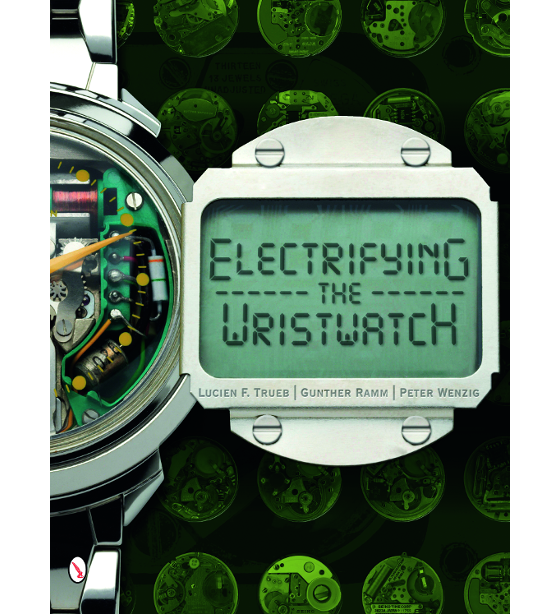
Analog Quartz Calibers
Rolex totally ignored microelectronics until the early 1970s; as a shareholder of CEH [Centre Électronique Horloger] it obtained 320 Beta 21 calibers out of the 6,000 that were actually produced. Furthermore, Rolex bought 650 pieces of the Beta 22 version produced by Omega; they are known as the Rolex Caliber 5100. In addition, Rolex Bienne was part of the consortium that financed the Neosonic-AFIF adventure with the known, sad end. Rolex Geneva was not involved.
After this easy beginning, it was quite clear to Heiniger that Rolex had to be independent in the realm of microelectronics too. In 1971 he hired René Le Coultre (b. 1918) who was then technical director of the Fédération Horlogère (FH). Le Coultre headed the technical department with a staff of 49, including 10 engineers. His first activity was to set up a top modern electronics lab with 13 people. He was then in a position to design quartz equivalents of Rolex’s mechanical calibers. This was not too difficult: at that time, Rolex only produced a ladies’ watch movement with two hands, a version with three hands, and a men’s watch caliber with sweep seconds hand and date or day/date.

The quartz equivalent of the men’s watch caliber came in two versions. The functions of Caliber 5035 (29.75 mm by 6.35 mm) were hours, minutes, sweep seconds hand, and date. Caliber 5055 (29.75 mm by 7.11 mm) featured the day/date function, which explains the difference in height. The quartz resonator’s frequency was adjusted with a trimmer capacitor covering a range of plus or minus two to three seconds per day. The rate was less than one minute a year, i.e., 0.17 second per day. The Rolex quartz calibers were launched in 1977; product life was an amazing 26 years. Both calibers featured a tuning-fork-type, mechanically cut 32-kHz quartz resonator made by NDK in Japan. It was replaced at the earliest possible date by the photolithographic type supplied at first directly by Statek in Orange (California) and, later on, by Micro Crystal in Grenchen. ETA had signed a licensing agreement with Statek; delivery from Grenchen started in 1978, Rolex was one of the earliest customers.
The CMOS integrated circuit Rolex needed was supplied by Ébauches Électroniques Marin, while the anchor-type motor was purchased from FAR (Fabriques d’Assortiments Réunies). Silver oxide batteries were available from the Swiss Renata company as well as from American and German suppliers. Total production of the Caliber 5035/5055 is exactly known: 105,097 – not terribly much considering that the product life was 26 years! Each and every one of them was certified by COSC as an electronic chronometer. Those movements were decorated with Geneva stripes exactly like a mechanical Rolex movement; they featured 11 jewels. In the mid-1980s, the Rolex quartz movements were thoroughly redesigned and modernized. The result of this work was Caliber 5235 (with date) and 5255 (with day/date). Caliber 5235, with a diameter of 28.10 mm and a height of 5.40 mm, was equipped with a Faselec chip that included digital frequency tuning, a Lavet stepping motor from ETA and an 11.6-mm three-volt lithium battery. The same applied for the day/date Caliber 5255 (29.90 mm by 5.80 mm). These were among the best conventional quartz calibers that were ever designed – unfortunately, they never saw mass production.
Instead, the famous Oysterquartz watch models were equipped with the quartz Caliber 5035 and 5055. They sold very well: they were less costly and at least 10 times more accurate than the mechanical Oyster. However, the cases were somewhat different: Heiniger would not tolerate that a quartz watch looked similar to a classic mechanical Rolex. The production was only about 4,000 pieces a year – not much marketing effort was made to promote the Oysterquartz – aside from a very original ad showing both Everest climbers Edmund Hillary and Reinhold Messner. Hillary had worn a mechanical Rolex on his ascent; Messner an Oysterquartz. The text just said: “In 1953 they needed Rolex watches and oxygen to climb Everest. In 1978 they did it without the oxygen.” The retailers were not at all motivated to sell the Oysterquartz, as the cost was significantly less than the mechanical Oyster and therefore meant less profit. There are tales about potential customers who literally had to beg for an Oysterquartz.
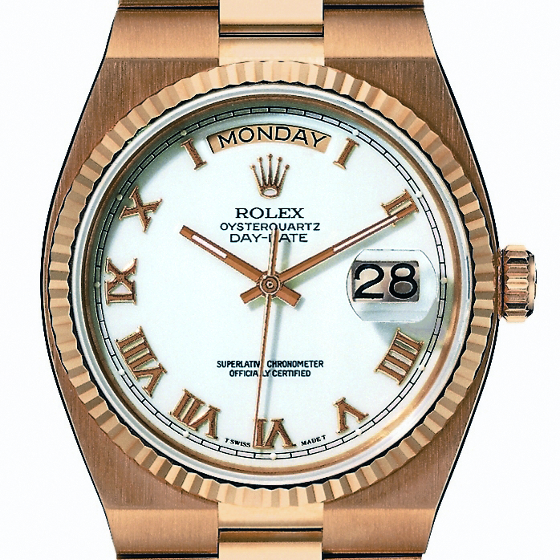
The Rolex quartz caliber for ladies’ watches (Caliber 6035) with sweep seconds hand and date disk had the exact same dimensions as the Ladies’ Datejust (19.79 mm by 5.00 mm). The frequency of the 32 kHz Micro Crystal tuning fork quartz resonator was fine-tuned with a trimmer. The CMOS circuit was purchased from Faselec, the Lavet motor from Seiko. The energy source was a 7.90-mm silver oxide battery. Thirty prototypes of Caliber 6035 were built but there was no mass production. However, Cellini quartz models were equipped with Caliber 6620 (no seconds hand): this caliber was directly derived from Caliber 6035. In July 1983, 20 prototypes of Caliber 6620 were available for tests that took a long time; serial production started as late as 1987. The diameter was 8¾ lignes (19.80 mm); the height 2.5 mm. The parts were standard Rolex issue, as mentioned above. In 1990, production of Caliber 6621 started; this time the trimmer was replaced by an inhibition circuit. Production of this caliber continues to this day; total production so far is well over 100,000 pieces.
Rolex developed several technically advanced quartz movements that never got beyond the prototype stage. The most interesting of them certainly was a thermo-compensated quartz caliber that was developed in 1985. Design studies were made with extremely stable high frequency (1.2 MHz and 2.4 MHz) quartz resonators with the ZT cut. The CEH produced those resonators and delivered 1,000 pieces in 1984. In 1986, Rolex built 50 prototypes but there was no production, even though the yearly rate was just a few seconds. Another very ingenious quartz caliber with a perpetual calendar had the same fate. It was set in a particularly easy way; it also featured a 2.4 MHz quartz resonator with ZT cut as well as a standard 32 kHz resonator. As the ZT quartz and its divider circuit needed a lot of power, it was only switched on every 10 minutes for 10 seconds in order to set the 32 kHz frequency. An extraordinary rate and a battery life of 10 years were achieved with a three-volt lithium battery that measured 22.0 mm by 2.5 mm. The 30-mm caliber featured three motors for the seconds, the minutes and hour, and the day/date function, respectively. This design was patented; the patent became public domain in 2011. A test series of 400 pieces was assembled, but there was no production; none of those prototypes ever left the Rolex premises.
The Pseudo-Analog Caliber FAN
In the mid-1970s, Heiniger let it be known that Rolex was interested in new and original quartz watch designs. His technical director René Le Coultre immediately recalled the CEH design of caliber Delta, a pseudo-analog, solid state movement with light emitting diodes and a solar cell power supply, for which no watch brand so far had shown any interest. This was the starting point of the FAN project (FAN = Forme Analogique). The Rolex electronic team was enthusiastic, even though chances were small that such a watch would ever be produced in series. Working for Rolex presupposes strong nerves and the will to produce “l’Art pour l’art.” Engineers who want to see their designs cut into metal immediately should not work for Rolex.
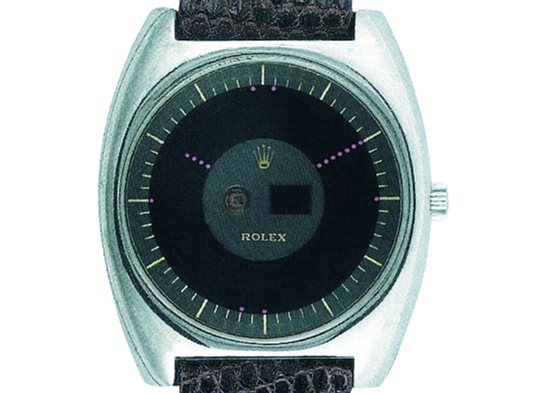
In 1975, Le Coultre “borrowed” Raymond Vuilleumier from the CEH in order to find vendors in the United States who might become suppliers of parts for the FAN caliber. Vuilleumier had worked for six years with General Electric and had built up a comprehensive network of microelectronic firms all over the U.S. Furthermore, Vuilleumier had been in charge of the Delta caliber project. Le Coultre also decided to take along his electronics specialist Edmond Zaugg, who also was an enthusiastic radio amateur. The trio traveled to the United States three times between 1975 and 1976. They were received everywhere with utmost courtesy: the name Rolex opened any door. The subcontracts for FAN could be placed with the best qualified firms. Thus, the FAN-dial module was supplied by Hewlett Packard in Palo Alto, and the multiple-layer connection module for the light emitting diodes was designed by Ceramic Systems in Sorrento Valley near San Diego. The CEH was responsible for the integrated circuit; Rolex would provide system integration and assembly.
The CEH Delta concept thus evolved into the Rolex FAN Caliber 7035; the dimensions were 30.0 mm by 8.00 mm with a pseudo-analog LED display. The hours were displayed with four light emitting diodes in a row, the minutes with seven such diodes, the seconds with a set of 60 diodes along the edge of the dial: they were lit one after the other within a minute in the clockwise direction. Thus, a radial matrix of 60 by seven LED was needed. As a help to the user, a pusher was provided that lit two diodes at 12 o’clock and one diode at 3, 6, and 9 o’clock. The date indication, consisting of the conventional seven-bar LED matrix, was arranged in the center of the dial. In order to energize it for two seconds, a key had to be pushed twice; a third pulse switched on the number of the month. A photodiode next to the date display controlled the intensity of the LED in function of the surrounding light level. There was no need for solar cells, as the continuous operation of this movement was unthinkable: a key to switch on the display Pulsar-like was indispensable. Rolex built just five prototypes with the components that were supplied by the CEH and the American companies mentioned above; they worked in August 1978. Developing the FAN had cost a cool million Swiss francs, but Rolex was not much poorer for that. When Heiniger decided that such a watch did not correspond to the Rolex product philosophy, the FAN project was cancelled and the development costs were written off. Publications on this subject were not authorized.
This article was originally posted in 2015 and has been updated.

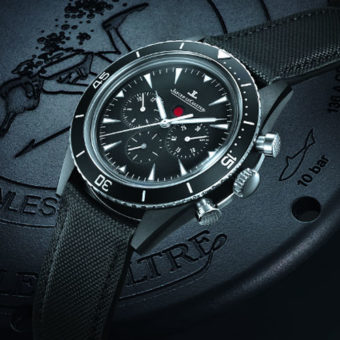
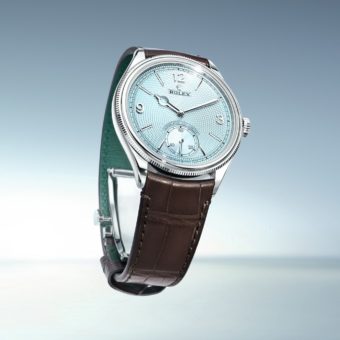
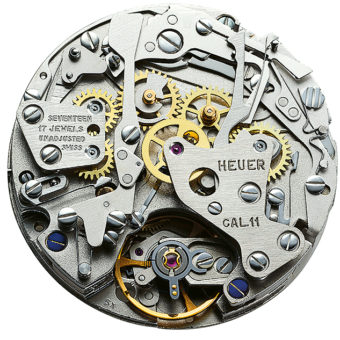
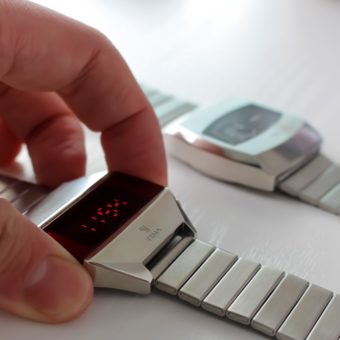
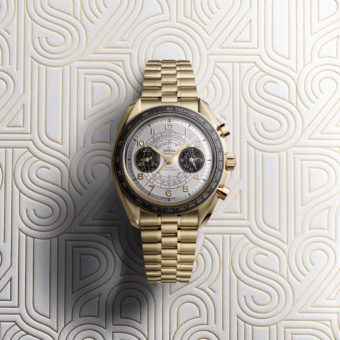
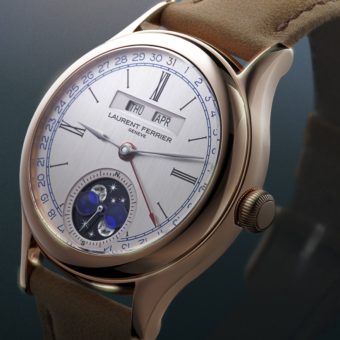
I just wanted to say I love the history of when rolex went quartz,love the look of oysterquartz rolex without the quartz.wish I could get my1530 oyster perpetual tuned up to preserve history
Have you ever heard of a swiss watch maker called, Onidex? 21 jewel with eight diamonds on the face?
Was there ever a Rolex Oyster Perpetual watch made with quartz written on the bottom of the face? With a leather band?
I just submitted a question about a Ladies 1970’s quartz Rolex I have & wasn’t sure I left my name. Please reply.
I was a collector and came across a ladies Rolex Geneve quartz (looks gold) watch in excellent condition..early 1970’s? It has the gold insignia on top front with roman numerals and clear (non-engraving) on backside. I can’t seem to find anything like it on internet & most info I found seems positive.. wonder if it is real or fake.
would Rolex produce wireless watch/phone?
Where can you have these Rolex Oysterquartz watches serviced?
So here we are, Feburary 2019 and ” When Rolex Went Quartz ” recirculates (again and again) to inform those who may not have previously read this article. But there is more to this story. Please expand on the 1530/1630 precursors to the Osterquartz introduction. These non-catalogue , non-advertised models debuted the case design adopted for the Osterquartz introduction. Rolex enthusiasts would enjoy learning the history and details of the 1530/1630 and their role in “When Rolex Went Quartz “.
Hungry for more …..
Andy
Great info. I have just received a Rolex quartz. It appears to be older and was wondering if they hold their values compared to mechanicals and how to find out it’s worth. If you could help me I would be thankful
Rolex is the best watchmaking company and it always adds some new and advanced technology to its products which attract people to buy this and it also competes with the apple watches also can visit apple customer support for more information.
I lately bought a very nice Oysterquartz to my collection and enjoy it very much. Prices of this tipe went higher/
I Have a black face square Rolex. Geneva quartz. Gold nugget band. 3 diamonds. Would love to know if it’s real.
I own 2 Rolex quartz mens and both need parts of quartz and looking for a place to buy parts for them I work on on Rolex and other watches but cant find these parts for reasonable prices!
The information was very interesting. I still like automatic wound watches.
This is why I love WatchTime. Interesting stories from horology well told.
Awesome article…I buy used ladies’ Rolex Quartz Watches. I would like to know more about how to identify the real from the fake, Thanks. Please email any info that you have or know about.
Most of the observations are correct.However the servicing costs for mechanical movements today are prohibitive.
This is where Rolex dropped the ball. A 26 year life expectancy? My Bulova Accutron Spaceview was made in 1961, and is still humming away today. I wear it all the time. The Bulova Accutron was the first successful electronic watch, and was used in the NASA space program. There was an Accutron movement on the Telstar satellite, and there is an instrument
on the moon, in the sea of tranquility. Bulova, and Omega, are the only watches that were good enough for the space program. The first quartz watch, is the Seiko Astron. So, Rolex only tried, unsuccessfully to copy Bulova, and Seiko. Anyone that thinks a mechanical watch is better is just confused, and has too much money. The Accutron watch was a revolution in watch making. The next revolution was the digital watch. Adding a few gears to a watch is not a technical revolution. Rolex makes a million watches a year, hardly exclusive, and hardly revolutionary. I also seriously question that a battery, much less 3, would last 10 years. Do we have any evidence of that? You have to be kidding. I wore a Bulova Precisionist today, and it’s batter will last 3 years. The second had sweeps, and it is boss. It weighs a pound, which makes it even more cool. The band is designed for the watch, and even the box is cool. Plus, Bulovas are available to be affordable for any working man. Rolex, not so much. All Bulova watches are COSC certified, and are the only watch, other than Omega, that have been to the moon. Commander Scott’s Bulova just sold at auction for $1.6 million dollars, and is the only privately owned watch that has been to the moon. Plus, they are much more fashionable than any Rolex. My Accutron York, which is quartz, has 47 individually set diamonds on it. Retail $1250. If you want to be fashionable, and actually wear your watches, you might check the list, because you don’t want to leave the house without a Bulova on your wrist. There is even a Soviet Connection. I am not sure of the date, but I think in 1963 President Johnson gave Nikita Kruschev an Accutron watch. (it is said the government asked Bulova not to release the watch too early for fear of the Soviets copying it for the technology.) The minute Mr. Kruschev got back to the Soviet Union he turned the watch over to the Watch Factory #2, and demanded they copy it. And, they did, but a crude copy. They only made 1,000, but since they had no consumer economy they only made 1000 batteries. I believe that it was called the Slabodia Electronica. There is only one working model that exists, and the man had to put Accutron parts in it to get it to work. It is considered the rarest watch in the world. By neglecting electronic watches, Rolex just dropped the ball. There is nothing revolutionary about a Rolex. People buy them for status, and I will match my Bulova watches to a Rolex, any day, time, or hour. I plan to wear a Marine Star tomorrow. If you want fine watches, you cannot beat a Bulova. Have a great day, and thanks for letting me share. Maybe you can do an article about the Slobovia Electronica?
26 year product life refers to timeframe that quartz offer was available as a listed product. Does not refer to life expectancy of watch- I think these timepieces will go for 100 years plus.
I partially agree, it is my opinion that Seiko is, overall, the BEST watch maker in history and will last. Bulova is a solid alternative as well. Omega, to me are far too overpriced. To suggest however, that a Rolex is somehow a bad watch is crazy. The submariner and Daytona have help greater resale value than ANY other watch in the world. As an Investment, excluding the crazys that buy 59,000$ Nautilus and relative car prices, the Rolex can be an heirloom and provides AMAZING resale, not to mention a fabulously qualified timepiece.
I agree with you here, the Seiko Superiors of the 70s are amazing, at +/- 5 seconds a year accuracy for a Seiko Superior 9983 is amazing. Citizen also produced the 4 Mega at +/- 3 seconds a year accuracy. These time pieces are hard to come by in good condition.
Rolex ladies geneve gold watch quartz 2531 please tell me about this.
Waa wondering if there was a rolex geneva quartz watch that says those exact words on the inside if the watch
I love your column. I look for watches that made history, and are unique. Rolex are not unique, nor is there really much history. My example of a electronic watch is a Bulova Accutronb Spaceview, in 14k, that was made in 1961, in the U.S.A. There is nothing else with the personality of a Spaceview. The reason I don’t have a Rolex is because they are just not fashionable. They all seem to look the same. I am currently eyeballing a Bulova Computron, but haven’t decided yet. People just look at price. I have a digital example by Alba, for Seiko that is very cool, and was $39.99 on Ebay, new in the box. I haven’t decided if European watches are better, or worth having. Your articles are interesting. I never thought I would be collecting watches. I am currently also eyeballing a Bulova Marine Star digital watch. It has a lot of personality, and a neon orange strap. It should make a great fashion statement, and isn’t that why you buy a watch? Have a great day!
The Oysterquartz is close to a perfect watch, IMO. I wish Rolex had done much more with it, such as an Oysterquartz Explorer, Oysterquartz Submariner, etc. I was reading a Rolex technical document about the Oysterquartz movement, and it lists the magnetic field tolerance as up to 1,000 Oe (Oersted), which works out be equivalent to 1,000 Gauss (or 80,000 A/m). So the lowly Oysterquartz is quite literally a quartz Milgauss, even if it’s not marked as such, and even if Rolex never positioned it that way with customers.
Bought my oyster quartz stainless with white gold new in 1989. Wear everyday and the only time off wrist is when it’s gone for service or battery change. Never off time in all those years. 27 years so far.
As mentioned in my 1/13/16 comment, it would be terrific to read the history and details about the precursor ref. 1530/1630 models that inspired the new Oysterquartz case designs. These “collector” models were a radical change from the traditional case along with a number of “firsts”, but little written production history/facts exist about the 1530/1630 pieces.
I have a stainless steel day/date, quartz. I got it from my Dad. Classic Jubilee bracelet. I prefer it over my TT Submariner, hands down.
Rolex did NOT EVER make a Stainless Steel Day Date Oysterquartz? Also ALL Oysterquartz watches had an integrated bracelet? So would love to see photos …
Good story.
Would also enjoy learning about the history/spec’s of the forerunner’s (ref. 1530/1630) to the Rolex Osterquartz introduction. These models are considered collectable “rare birds” as few were made. They revealed the new case design adopted for the Quartz models only with automatic movements. They also were the first Rolexes with Sapphire crystals.
I bought a Tag Heuer Professional 1000 diver’s watch 20 years ago not thinking how it was run and found out it was a quartz watch when I asked to have it serviced.
How silly is that?
i have a Rolex Quartes Watch its silver
Rolex will return to a line of superlative quartz watches. How else can it grow.
Did any of the cal 5100 get cased and sold or were they only for testing purposes. As an Omega collector I love the fact that it was a re badged Beta 22 !
The Caliber 6621 is made to this day? In which watch is it used?
Used in the Cellini quartz
The funny thing is FAN is the 1st gen Apple smart watch and ROLEX abandoned it. Bet that stings!